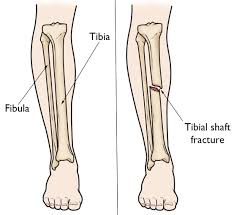A nurse is teaching a client who has a prosthetic limb due to a right below-the-knee amputation about prosthesis and stump care. Which of the following instructions should the nurse include in the teaching?
Dry the prosthesis socket completely before applying it to the limb.
Apply a moisturizing lotion or oil to the stump daily.
Keep the prosthesis in direct contact with the residual limb.
Expect some skin irritation from the prosthesis.
The Correct Answer is A
Choice A reason:
It is essential to dry the prosthesis socket completely before applying it to the limb to prevent any moisture-related issues, such as skin irritation or infection. Moisture can create an environment conducive to bacterial growth and can also cause the prosthesis to slip or not fit properly.
Choice B reason:
While it is important to keep the skin of the stump moisturized, applying lotion or oil immediately before putting on the prosthesis is not advised. Lotions and oils can make the skin slippery, leading to a poor fit of the prosthesis or even causing the prosthesis to slip off. It is better to apply moisturizer at a time when the prosthesis will not be worn for a while, allowing the skin to absorb the lotion fully.
Choice C reason:
The prosthesis should not be in direct contact with the residual limb without proper padding or a liner. Direct contact can lead to pressure sores, skin irritation, and discomfort. Properly fitted socks or liners should be used to cushion the limb and ensure a comfortable, secure fit.
Choice D reason:
While some skin irritation may be expected when first using a prosthesis, persistent irritation is not normal and should be addressed by a healthcare provider. The prosthesis may need to be adjusted, or there may be an issue with the fit or the materials used. Skin irritation should not be accepted as a standard part of using a prosthesis.
Nursing Test Bank
Naxlex Comprehensive Predictor Exams
Related Questions
Correct Answer is C
Explanation
Choice A reason:
While explaining discharge instructions is an important part of patient education and ensuring safety after leaving the hospital, it is not the immediate priority. The nurse must first address any potential medical issues that could compromise the patient's health, such as circulation and nerve function in the affected limb.
Choice B reason:
Applying an ice pack to the casted leg can help reduce swelling and provide comfort to the client. This is often recommended for the first 24 to 72 hours after the cast is applied, especially if the cast is on a leg. However, this is secondary to assessing the neurovascular status of the limb.
Choice C reason:
Performing a neurovascular assessment is the priority action for the nurse. This assessment includes checking for sensation, warmth, capillary refill, pulses, and movement. It is crucial to identify any signs of compromised blood flow or nerve injury early to prevent further complications.
Choice D reason:
Providing reassurance to the client and parents is important for emotional support and can help alleviate anxiety. However, the nurse's immediate priority is to ensure the physical well-being of the client, which includes performing a neurovascular assessment to detect any urgent issues.

Correct Answer is A
Explanation
Choice A reason:
The inability to move toes can be an early sign that a cast is too tight. This symptom may indicate that the cast is impinging on nerves or blood vessels, leading to decreased motor function. It is essential to address this immediately to prevent further complications such as permanent damage or compartment syndrome.
Choice B reason:
Edema, or swelling of the toes, can occur if a cast is too tight, but it may not be the first sign observed. Swelling is a response to increased pressure in the tissues and can develop over time as fluid accumulates. While it is a concern, it often follows other symptoms such as changes in sensation or movement.
Choice C reason:
Pallor of the toes, indicating reduced blood flow, can be a sign of a cast that is too tight. However, pallor may not be as immediately noticeable as the inability to move toes or changes in sensation. It is still a critical sign that requires prompt evaluation and possible adjustment of the cast.
Choice D reason:
A change in the temperature of the toes, such as them becoming cooler to the touch, can suggest impaired blood flow due to a tight cast. This sign, along with pallor, may develop after other symptoms such as numbness or motor impairment.
Whether you are a student looking to ace your exams or a practicing nurse seeking to enhance your expertise , our nursing education contents will empower you with the confidence and competence to make a difference in the lives of patients and become a respected leader in the healthcare field.
Visit Naxlex, invest in your future and unlock endless possibilities with our unparalleled nursing education contents today
Report Wrong Answer on the Current Question
Do you disagree with the answer? If yes, what is your expected answer? Explain.
Kindly be descriptive with the issue you are facing.
